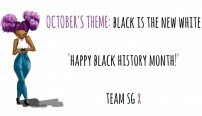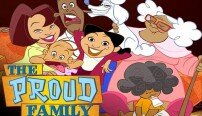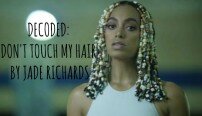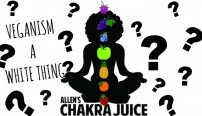Hair is just hair, isn’t it?
This is the question posed by artist Selina Thompson in her powerful, provoking yet stunningly beautiful conversational performance, Dark and Lovely.
She reveals all the hard-hitting truths and political realities inside her hair built home of abandoned hair extensions and weaves a.k.a the “Tumble Weave.”
Some may say it is pretty gross, especially when walking into the set and the first thing you are encouraged to do is to touch it! As a young Afro-Caribbean woman the last thing I want is for anyone to touch ‘THE HAIR.’
This experience instantaneously took me back to that disconcerting moment of feeling like an animal in a zoo, having to justify to other races why I don’t want their greasy ‘heck knows where on Earth your hands have been for a start’ hands in my head.
This is the definition of theatre, its supposed to make you feel something.
Selina says “When I first made it I was really anxious, it was a show that I had overtly made for black women (obviously I want other people to come and enjoy it) but it is a show by a black woman, for black women but before we did I was absolutely, kind of terrified that black women would hate it.”
Ever wondered what goes on in the deepest part of a black woman’s mind when it comes to her hair and beauty anxieties? This settles all curiosity…Yes even the cats!
How did you come up with the concept of Tumbleweave?
Hmmm, I am not sure. I can remember the first time I said aloud I was going to do it – in the middle of an interview – and then having a massive panic about how I was actually going to do it. I knew I wanted to build a big structure out of hair – initially it was going to be a throne – and I knew I wanted to be able to hide in the work, and the tumble weave allowed both. It was a very instinctive thing.
How did you carry out the research process for the production?
I read loads and loads and interviewed loads and loads of people, and sat in hairdresser’s ‘people watching.’ I had long (long)chats with my mum and my aunties, and my grandmother, and geeked out on all things hair. It was fun!
What were the most interesting things you found out from your research?
I was fascinated by the economics of it – so the fact that black women in the UK spend six times more on their hair than any other group. And also, stories that revealed grey areas – in 2005 there was a white girl who got cane rows on holiday – she wore them into school, and was told she had to take them out because they were inappropriate. The child’s parents complained – saying that other girls, black children wore cane rows to school – and the school replied that they made allowances for other people’s ’traditional cultures’. Stories like that fascinated me.
What was it like for you growing up as a child with afro hair?
Normal! My hair for me meant spending a lot of time sat on a little stool, fidgeting, while my mum detangled/braided/twisted/separated into big plaits.
Do you believe the media play a role in how Afro-Caribbean women view their hair?
I believe the media play a role in how everybody perceives every facet of their lives – hair is no different, and Afro Caribbean women are no different.
“I believe the media play a role in how everybody perceives every facet of their lives – hair is no different.”
What do you love about your afro?
It always smells great and its super soft. When it is fresh out of plaits, and pre shrinkage, I adore it – a long, slightly unkempt afro really suits me. I love it because it’s mine.
What are your top three tips for afro hair maintenance?
- Spray your hair with a little water before you rub oils on it – hair doesn’t absorb most oil, it simply locks moisture in around the hair strand – so you need to make sure the moisture is there in first place.
- Protective Styles are your friend – braid in the winter if you need to, wrap with a scarf if it doesn’t do well in heat.
- But above all, remember that you must do with your hair what is right for you – don’t let too many other voices into your head when it comes to decisions you make about your body – including your hair.
Who do you think are the good role models in the media representing for the young black women?
Role models are a strange one : we all need different things at different times, and pick our role models accordingly. I know I am inspired by Viola Davis, Janelle Monae, Janet Mock, Amandla Stenberg, Gabourey Sidibe, Michaela Coel, Warshan Shire, Reni Eddo Lodge, Chimamanda Ngozi Adichie, Zadie Smith, Kelela, Santigold and Lupita N’yongo. There are so many black women to look up to – we live in a truly blessed time.
What message do you want Black British Females to take away from this production?
I don’t really want people to take messages away from my work – but I do want them to leave my work talking: to talk about things they recognise in the work, to talk about things that they disagree with, to talk about their own experiences, to maybe articulate things they’ve felt a little nervous or embarrassed to say before.
What advice can you give to a Skool Girl?
- Neither school nor university will be the best years of your life, so don’t worry.
- All advice is autobiographical - so evaluate it accordingly.
- Never forget that self-care is not a luxury – and to extend self-care beyond the self, and care for others too.
- If in doubt, drink water, eat fruit, and mind your business.
Catch Dark and Lovely at The Rep Theatre, Birmingham until Saturday 14 November.
For more information visit, www.birmingham-rep.co.uk
Also published on Graft Entertainment












